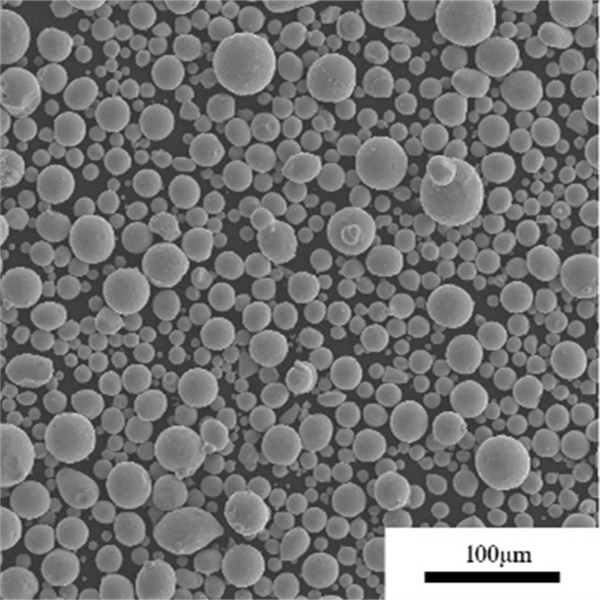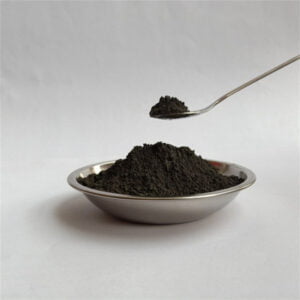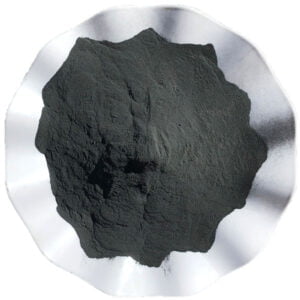pulver för beläggning
Innehållsförteckning
pulver för beläggning has become a popular and versatile technique for applying a protective and decorative finish to various surfaces, particularly metals. Unlike traditional liquid paints, powder coating utilizes dry, finely-ground particles that are electrostatically charged and sprayed onto the object. When heated in a curing oven, these particles melt, forming a continuous, hard-wearing layer.
This guide delves deep into the world of powder coating powders, exploring their types, properties, applications, and various considerations when choosing the perfect powder for your project. We’ll also explore specific metal powder models to equip you with the knowledge to make informed decisions.
Tillämpningar av Pulver för ytbeläggning
Powder coating offers a multitude of advantages over traditional liquid paints, making it a preferred choice across numerous industries. Here’s a glimpse into its diverse applications:
- Fordonsindustrin: Powder coating is extensively used for car parts like rims, bumpers, engine blocks, and even interior components due to its exceptional durability, chip resistance, and weatherproofing abilities.
- Konsumentvaror: From household appliances like refrigerators and washing machines to electronics like laptops and mobile phones, powder coating enhances aesthetics and protects against scratches, corrosion, and everyday wear-and-tear.
- Construction Industry: Metal building components, railings, furniture, and architectural elements benefit greatly from powder coating’s superior resistance to harsh weather conditions and UV rays.
- Medical Equipment: Powder coating ensures a hygienic, easy-to-clean surface for medical devices and instruments, vital for maintaining sterile environments.
- Sportartiklar: Bicycles, fitness equipment, and outdoor gear often utilize powder coating for its excellent resistance to impact, chemicals, and moisture.
Beyond these, powder coating finds applications in countless other industries, including aerospace, agriculture, and energy.

Advantages of Powder for Coating
So, what makes powder coating such a compelling choice? Let’s explore some of its key advantages:
- Hållbarhet: Powder-coated surfaces are incredibly tough and resistant to chipping, scratching, fading, and corrosion. They can withstand extreme temperatures, harsh chemicals, and constant use, making them ideal for demanding applications.
- Miljövänlig: Compared to traditional paints, powder coating releases significantly lower levels of VOCs (volatile organic compounds). Additionally, the overspray can be efficiently recaptured and reused, minimizing waste.
- Estetik: Powder coating offers a wide variety of colors, textures, and finishes, allowing you to achieve a smooth, glossy look, a textured matte finish, or even a metallic sheen. This opens doors to creating visually enticing and unique products.
- Kostnadseffektivitet: While the initial setup costs might be higher, powder coating offers a cost-effective solution in the long run. The single-coat application, minimal waste, and extended lifespan of the coating translate to significant savings over time.
- Application Efficiency: The electrostatic process ensures excellent coverage and minimizes overspray, leading to a more efficient application process.
Disadvantages of Powder Coating
While boasting numerous advantages, powder coating also has limitations to consider:
- Begränsad Materialkompatibilitet: Powder coating primarily works best with conductive materials like metals. Non-conductive surfaces require a pre-treatment for the powder to adhere effectively.
- Initial investering: Compared to traditional painting methods, setting up a powder coating system requires a higher initial investment in equipment and infrastructure.
- Heat Sensitivity: The curing process involves high temperatures, which can be a concern for heat-sensitive materials or components with intricate details.
Types of Powder Coating Powders
Powder coating powders come in various compositions, each offering distinct properties and functionalities. Here’s a breakdown of some common types:
| Typ | Sammansättning | Fastigheter |
|---|---|---|
| Epoxy | Epoxihartser | Excellent chemical resistance, good adhesion, durable finish |
| Polyester | Polyesterhartser | Versatile, weatherproof, cost-effective |
| Polyurethane | Polyuretanhartser | High flexibility, impact resistance, excellent aesthetics |
| Nylon | Nylon resins | Abrasion and chemical resistance, good electrical insulation |
| Acrylic | Akrylhartser | UV resistance, glossy finish, limited chemical resistance |
| Fluoropolymer | Fluorpolymerhartser | Non-stick properties, excellent chemical resistance, high heat tolerance |
| Silicone-Epoxy Hybrid | Combination of silicone and epoxy resins | Superior heat resistance, chemical resistance, flexibility |
Within these types, further variations exist, formulated for specific applications. For instance, some powders boast anti-microbial properties, making them ideal for medical equipment, while others provide excellent fire resistance for building materials.
Specifika metallpulvermodeller
Now, let’s delve into the world of specific metal powder models. Here are 10 popular options to consider:
- AkzoNobel Interpon D1031: This epoxy-based powder offers exceptional durability, corrosion resistance, and chemical resistance. Ideal for outdoor applications, architectural components, and industrial equipment.
- PPG Envirokote 2300: A versatile polyester powder known for its weatherability, UV resistance, and gloss retention. This PPG offering makes it a popular choice for consumer goods, appliances, and outdoor furniture.
- Tiger Drylac 8810: A high-performance polyurethane powder that delivers excellent flexibility, impact resistance, and scratch resistance. This Tiger Drylac model is perfect for sporting goods, electronics, and automotive parts.
- Axalta Alesta AP: An epoxy-polyester hybrid powder that combines the chemical resistance of epoxy with the weatherability of polyester. This Axalta powder is a great choice for construction materials, building components, and marine applications.
- Sherwin-Williams Polyvance TGIC-Free Polyester: An environmentally friendly polyester powder formulated without TGIC (triglycidyl isocyanurate). This Sherwin-Williams option offers good durability and performance while adhering to stricter environmental regulations.
- DuPont Teflon® Industrial Powder Coatings: A fluoropolymer-based powder renowned for its non-stick properties, superior chemical resistance, and excellent heat tolerance. This DuPont powder finds applications in cookware, medical devices, and industrial settings requiring a high level of chemical resistance.
- PPG Enviracron ETFE: An ethylene tetrafluoroethylene (ETFE) based powder known for its exceptional weatherability, UV resistance, and self-cleaning properties. This PPG option is ideal for architectural facades, building exteriors, and applications requiring long-lasting aesthetics.
- Reichhold Electrocure UTX-935: A low-cure polyurethane powder designed to cure at lower temperatures compared to standard powders. This Reichhold model is suitable for heat-sensitive components, electronic devices, and applications where high curing temperatures are a concern.
- AkzoNobel Interpon D7100: A specialty epoxy powder formulated for anti-microbial properties. This AkzoNobel option is well-suited for medical equipment, healthcare facilities, and applications requiring a hygienic surface.
- Tiger Drylac 8400: A textured polyester powder that creates a visually appealing, scratch-hiding matte finish. This Tiger Drylac model is a popular choice for architectural components, furniture, and applications where aesthetics and hiding imperfections are desired.
This list merely scratches the surface of the vast array of metal powder models available. With advancements in technology, new formulations are constantly emerging, catering to specific needs and applications.
Key Considerations When Choosing a Powder Coating Powder
Selecting the perfect powder coating powder hinges on several crucial factors:
- Substrate Material: Ensure the powder is compatible with the material you’re coating. Most powders work with conductive materials like metals, but non-conductive surfaces might require special pre-treatment.
- Desired Finish: Consider the aesthetics you want to achieve. Powders come in a wide range of colors, textures (smooth, glossy, matte, textured), and metallic finishes.
- Performance Requirements: Evaluate the properties required for your application. Do you need superior chemical resistance, flexibility, heat tolerance, or UV resistance? Choose a powder specifically formulated to meet those needs.
- Miljöbestämmelser: In some regions, regulations might restrict the use of certain chemicals in powder coatings. Opt for environmentally friendly, TGIC-free options if necessary.
- Budget: Powder coating powders vary in price depending on the type, composition, and specialty features. Consider your budget while ensuring the chosen powder meets your performance requirements.

Specifications, Sizes, Grades, and Standards of Powder Coating Powders
Here’s a table outlining the specifications, sizes, grades, and standards commonly associated with powder coating powders:
| Funktion | Beskrivning |
|---|---|
| Typer | Epoxy, Polyester, Polyurethane, Nylon, Acrylic, Fluoropolymer, Silicone-Epoxy Hybrid, etc. |
| Avsluta | Gloss, Satin, Matte, Textured, Metallic |
| Partikelstorlek | Typically between 20 and 100 microns |
| Cure Temperature | Varies depending on the type of powder (typically between 300°F and 400°F) |
| Standarder | ASTM International (ASTM) sets standards for powder coating powders, including adhesion, chemical resistance, and impact resistance. |
Suppliers and Pricing of Powder Coating Powders
Powder coating powders can be sourced from various suppliers, including:
- Paint and coating manufacturers: Major paint and coating companies like AkzoNobel, PPG, and Sherwin-Williams offer a wide range of powder coating powders.
- Specialty powder coating suppliers: Several companies specialize in formulating and distributing powder coatings for specific applications.
- Online retailers: Various online retailers sell powder coating powders, though it’s crucial to ensure reputable sources and proper storage considerations when purchasing online.
Pricing for powder coating powders can vary depending on several factors:
- Type of powder: Epoxy and polyester powders are generally more cost-effective, while specialty powders like fluoropolymers or anti-microbial options might have a higher price tag.
- Kvantitet: Purchasing larger quantities often comes with bulk discounts.
- Leverantör: Prices can vary between suppliers, so comparing quotes from different vendors is recommended.
Here’s a table providing a general range of powder coating powder pricing (per pound):
| Type of Powder | Prisintervall |
|---|---|
| Epoxy | $2 – $5 |
| Polyester | $2 – $4 |
| Polyurethane | $3 – $6 |
| Nylon | $4 – $7 |
| Acrylic | $3 – $5 |
| Fluoropolymer | $5 – $8 |
| Silicone-Epoxy Hybrid | $4 – $7 |
It’s important to remember that these are just estimates, and actual prices may differ.
Comparison of Pros and Cons of Powder Coating Powders
Here’s a table directly comparing the pros and cons of powder coating powders to aid decision making:
| Proffs | Nackdelar |
|---|---|
| Excellent durability and longevity | Limited material compatibility (primarily works with conductive materials) |
| Wide range of colors, textures, and finishes | Higher initial investment compared to traditional painting methods |
| Environmentally friendly with minimal VOC emissions | Heat sensitivity might be a concern for some applications |
| Cost-effective in the long run due to single-coat application and minimal waste | Requires specialized equipment and expertise for application |
| Excellent chemical and corrosion resistance for many types |

VANLIGA FRÅGOR
Q: What safety precautions should I take when handling powder coating powders?
A: Powder coating powders can contain fine particles that can irritate the lungs. Always wear proper personal protective equipment (PPE) like a respirator, gloves, and safety glasses when handling powder. Additionally, maintain good ventilation in your workspace to minimize dust inhalation.
Q: Can I apply powder coating myself at home?
A: While small DIY kits are available, achieving a professional-grade finish with powder coating typically requires specialized equipment and a curing oven. For optimal results, consider outsourcing the project to a professional powder coating service.
Q: How long does powder coating last?
A: Powder coating can last for decades with proper application and depending on the environmental conditions. Generally, it offers superior longevity compared to traditional liquid paints.
Q: How can I clean a powder-coated surface?
A: Powder-coated surfaces are generally easy to clean. You can use mild soap and water or a non-abrasive cleaning solution. Avoid using harsh chemicals or abrasive cleaners that can damage the finish.
Q: Are there any alternatives to powder coating?
A: Traditional liquid paints are a common alternative, though they may not offer the same level of durability, environmental friendliness, or cost-effectiveness in the long run. Electroplating is another option for certain metals, providing a metallic finish and good corrosion resistance.
Dela på
MET3DP Technology Co, LTD är en ledande leverantör av lösningar för additiv tillverkning med huvudkontor i Qingdao, Kina. Vårt företag är specialiserat på 3D-utskriftsutrustning och högpresterande metallpulver för industriella tillämpningar.
Förfrågan för att få bästa pris och anpassad lösning för ditt företag!
Relaterade artiklar

Högpresterande segment för munstycksvingar: Revolutionerande turbineffektivitet med 3D-utskrift i metall
Läs mer "Om Met3DP
Senaste uppdateringen
Vår produkt
KONTAKTA OSS
Har du några frågor? Skicka oss meddelande nu! Vi kommer att betjäna din begäran med ett helt team efter att ha fått ditt meddelande.

Metallpulver för 3D-printing och additiv tillverkning
FÖRETAG
PRODUKT
cONTACT INFO
- Qingdao City, Shandong, Kina
- [email protected]
- [email protected]
- +86 19116340731
















